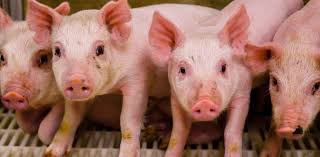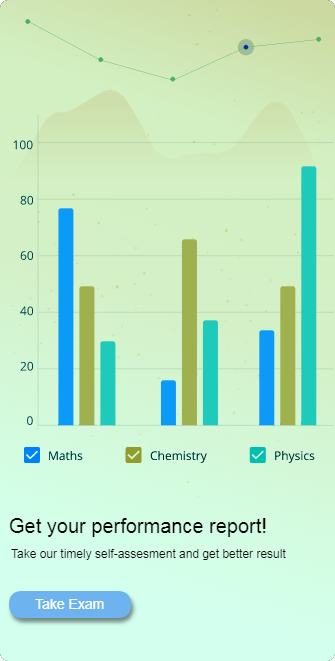Reasons not to worry about that ‘new’ swine flu in the news
July 7, 2020

It may feel odd to be thinking ahead to the next potential pandemic when the world is far from finished with the current one. But reports of a newly identified swine influenza virus that shows hints of being able to spread among humans have raised that specter — although public health officials say it’s not an imminent threat.
That virus, identified in pigs in some parts of China, has characteristics similar to a strain that caused the 2009 H1N1 swine flu pandemic (SN: 12/18/09), a new study finds. But just identifying such a flu virus circulating in pigs does not mean it poses an immediate threat to people. Rather it signals to researchers that they should monitor sick people for similar viruses.
“It’s not an immediate threat where you’re seeing infections,” Anthony Fauci, director of the U.S. National Institute of Allergy and Infectious Diseases in Bethesda, Md., said in a U.S. Senate hearing on June 30. “But it’s something we need to keep our eye on, just the way we did in 2009 with the emergence of the swine flu.”
Influenza viruses bind to a protein called sialic acid to break into cells. Birds and people have different types of this protein in their upper airway, but pigs have both. That makes pigs not only susceptible to swine-specific flu strains but also to flu viruses from birds and humans. As a result, the animals often become influenza mixing pots.
Once in pigs, bird, swine and human flu viruses can exchange genetic material — called reassortment — giving rise to new strains (SN: 2/12/10). If some of those new strains can infect people and make them sick, the virus might go on to cause larger outbreaks.
Like the 2009 H1N1 virus, a newly identified pig virus, called G4 EA H1N1, or G4 for short, can attach to the type of sialic acid that lines a person’s respiratory tract, and it can also replicate in human cells grown in a dish, researchers report June 29 in the Proceedings of the National Academy of Sciences. Infected ferrets — an animal commonly used to study influenza because ferrets exhibit similar symptoms as people — can also get sick and pass the virus to other ferrets. The findings hint that the virus has the potential to cause disease and be transmitted among people.
“It really points out the fact that we’ve got to keep watching influenza viruses,” says Marie Culhane, a swine veterinarian who studies influenza at the University of Minnesota in St. Paul and was not involved in the study.
Here are four things to know about the G4 swine flu virus.
The virus began circulating in pigs in 2013.
That means the new virus isn’t really brand new.
“That means that this virus is very good at going pig to pig,” Culhane says. “And it’s also probably good at not causing very severe disease in the pigs, because if it was … people would want to do something about it.”
It’s unclear just how widely the virus has spread. So far, scientists have tested only a small portion of pigs in China.
The virus has infected some people, but it’s unclear if they got sick.
Ten percent of 338 people tested who worked with pigs had antibodies, or immune proteins that recognize the virus — a sign that they had recovered from a previous infection, Liu and colleagues found.
Antibodies can stick around for years after an infection, so it’s not known when the workers have exposed to the virus. It’s also unclear whether those people had symptoms while they were infected. It’s possible that the virus doesn’t cause severe disease, so the infections went unnoticed. If the workers did have symptoms, there’s also a chance that the signs of illness were indistinguishable from regular flu.
There is a slight possibility that the test picked up immune proteins that recognize another flu virus, not G4. Looking for antibodies is like “looking for smoke,” Culhane says. “You see smoke, but you don’t know where the fire is.”
Other flu antibodies that bind to closely related virus strains did not recognize the newer virus. That means that the part of the virus that the antibodies bind to has changed enough so that people don’t have protection from previous flu bouts and might not be immune if the virus began to spread.
There’s no evidence the virus can easily spread among people.
When monitoring different flu strains and determining pandemic risk, “what people watch for is the human-to-human transmission,” Culhane says. If lots of people who have no connection to pigs or other infected animals were infected with the virus, that would be more concerning.
The study found that only 4 percent of people in the general population had antibodies to G4 — and those with regular exposure to pigs were more likely to test positive. The paper also cites two cases of flu that were caused by a G4-like virus in people whose neighbors had pigs. But there’s no evidence that someone who worked with pigs then passed the virus to someone else.
There’s no evidence of the virus in other places.
The World Health Organization coordinates a Global Influenza Surveillance and Response System, which gathers data from member countries to monitor seasonal and pandemic flu. The United States has its own monitoring system in place within the U.S. Department of Agriculture and Centers for Disease Control and Prevention.
Right now, only pigs in China are known to carry the G4 flu strain. There’s no evidence that G4 or similar viruses are in other countries. For the United States, specifically, “there’s just no evidence of that, and we look at the data all the time,” Culhane says.
Source: Science News
Related Articles
China bubonic plague: Inner Mongolia takes precautions after case
Authorities in China have stepped up precautions after a city in the Inner Mongolia autonomous region confirmed one case of bubonic plague. According to state reports, the Bayannur patient – a herdsman – is in […]
Trending Articles
New price list of books form class 1 to 12 for BS 2080
Curriculum development center Sanothimi Bhaktapur under the Ministry of Education, Science, and Technology has released the price of new books from class 1 to class 12 for the educational year 2080. The price is only […]
Popular Tags: 7 Days
Upcoming MCQs

Computer Fundamental Multiple Choice Questions Exam Free
- 2022-03-20 12:45
- 60 Mins
- 12 Enrolled
- 25 Full Marks
- 10 Pass Makrs
- 25 Questions












